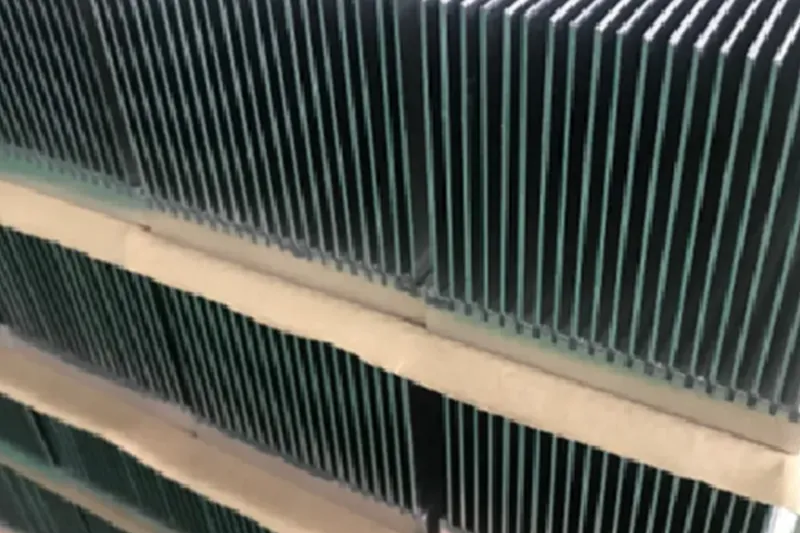Bonded fin heat sink
The bonded fin heat sink is a type of cooling device used for dissipating heat from electronic components or systems. It is designed to increase the surface area available for heat transfer, thereby improving thermal performance.
What is a bonded fin heat sink?
Bonded fin heat sink is an efficient heat sink, whose unique design mainly includes a base and heat sinks that are firmly connected by bonding. This connection method forms a tight structure between the heat sink and the substrate, effectively increasing the surface area of the overall heat sink. Through this design, Bonded fin heat sink can more effectively absorb and conduct the heat generated by the device, thereby improving the efficiency of heat dissipation.
This type of heat sink is commonly used in high-performance devices such as electronic devices or TEC cooling, and is highly favored due to its compact structure and efficient heat dissipation performance. In bonded fin heat sink, high-quality thermal conductive materials such as aluminum alloy are usually used to ensure good thermal conductivity. The firmly bonded heat sink provides a larger heat dissipation surface, allowing the device to maintain a stable temperature during high load operation.
How to make a bonded fin heat sinks?
The heat sink for epoxy resin bonding process can usually be made of aluminum base plate or copper fin plate, and vice versa. It can also be made of aluminum base plate and aluminum fin plate. There is no need for surface nickel plating treatment between the two, and epoxy resin bonding can be used. Firstly, grooves need to be machined at the bottom of the heat sink. Generally, the grooves are 1.2mm wide and 2.5mm deep, and the suitable fin plate is 1mm.
The distance between the grooves should be machined according to actual needs. Then place the fin into the groove, fill it with epoxy resin, fix it with a fixture, and place it in a 100 degree oven. Start curing under high temperature for 60 minutes, and then take it out for cleaning and CNC processing. Note that this can only be done for surface cleaning treatment, not anodizing treatment.
What are the advantages of bonded heat sinks?
High thermal conductivity: Bonded fin heat sink utilizes a structure with a metal base and aluminum fins, allowing for direct contact and high thermal conductivity between the components. It efficiently transfers heat from electronic devices to the fins and accelerates heat dissipation.At the same time, you can choose different materials to make a heat sink. The surface does not need to be nickel-plated, so you can connect the aluminum fins and copper bottom plate.
Compact structure: Bonded fin heat sink is typically manufactured using lightweight and compact aluminum materials. Its compact design is advantageous in applications with limited space, as it can be installed and used efficiently in small devices and compact electronic systems. Large surface area for heat dissipation: The design of bonded fin heat sink incorporates numerous thin fins, providing a large surface area for heat dissipation. This effectively lowers the operating temperature of electronic components, enhancing system stability and reliability. Convenient manufacturing and installation: Bonded fin heat sink features a relatively simple manufacturing process, allowing for mass production. It is often provided in a modular form, making it easy to install on electronic components or circuit boards. This simplifies the design and integration of the heat dissipation system.
Customizability: Bonded fin heat sink can be customized according to the specific requirements of the application. It can be designed based on the characteristics, size, and shape of the heat source to achieve optimal heat dissipation performance. This makes it highly suitable for various electronic devices .




